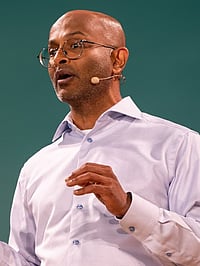o9, an enterprise AI software platform provider for transforming planning and decision-making, announced that it is expanding its collaboration with Microsoft by integrating Microsoft Azure OpenAI Service applications with the o9 Digital Brain to improve the platform’s AI-powered planning capabilities.
Azure OpenAI Service provides REST API access to OpenAI's powerful large language models (LLM), including the GPT-4, GPT-3.5-Turbo, and Embeddings model series. As per a company statement, these models can assist in content generation, summarisation, image understanding, semantic search, and natural language-to-code translation.
“As companies look to continuously improve their supply chain operations and make processes more efficient, generative AI technologies and APIs will allow planning teams to leverage vast amounts of domain knowledge to make more informed business decisions in real-time,” said Chakri Gottemukkala, Co-founder and CEO of o9.
With the addition of LLMs, o9’s Digital Brain can digitise and connect the “tribal knowledge” in organisations that exists today in Microsoft Outlook email, Word documents, PowerPoint slides, Teams chat systems and more into expert recipes that are accessible to every planner in the organisation.
o9’s AI service uses Azure OpenAI Service to securely translate users’ natural language queries into a proprietary integrated business planning language (IBPL) that leverages o9’s domain specific knowledge models. By utilising Azure OpenAI Service’s embeddings, o9 enhances the ability to conduct semantic searches across its Enterprise Knowledge Graph that powers the o9 Digital Brain, ensuring more accurate and relevant results.
Additionally, the construction of digital assistant workflows is improving through an agent framework that employs Azure OpenAI Service’s chat-completion with function-calling and code-generation features, enabling more efficient and intelligent automation within enterprise planning operations. This added functionality allows supply chain planners to apply the o9 Digital Brain’s domain knowledge to answer queries that inform real time decision-making. For example, when a user enters a query, the system will determine whether it requires a knowledge-based response or data retrieval.
The system uses a retrieval augmented generation (RAG) model to find information that fits within the query’s parameters, responds to the user, and, in certain contexts, can also prompt a user to determine what next steps should be taken. Over time, as the system gathers more domain knowledge and refines its query responses, it becomes capable of providing insights more efficiently, while also enabling hyper-automation based workflows.



























